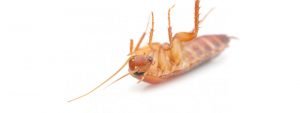Professional Pest Control Advice
[separator top=”-55″ bottom=”10″ style=””]
Protecting Your Home from Pests
What can you do to prevent pests from invading the home? Well, there are a number of things that can be done to help slow down the invasion of pests. There are no 100% guarantees or solutions to a pest problem. Each problem will have to be treated in different way, and this will depend on a few things, such as the environment in which the problem is occurring.
Treatment for Spiders
For instance, if a customer phones up and says they are having a big problem with spiders and they live in the bush surrounded by trees and bushes, then this will be very hard to eliminate the spiders for good. The pest controller would have to spray a 1 kilometre radius around the home to have any chance of keeping them away. Bushes that are close to the home can be sprayed to help prevent spiders and bugs from nesting there, but this will only stop them for a few months. All it takes is some good heavy rain and the pesticide will be washed away. The other thing to understand with spiders is that a direct hit with a pesticide is required to kill them. The product that is left on the surface will not keep them away. Understand that spiders manoeuvre around via webs, and also have small hairs on the end of their legs that prevent them from touching any residual pesticides.
To have an effective pest treatment done, its best to contact a professional pest control company that can explain properly how to keep pests to a minimum.
Dealing with Cockroaches, Spiders, Ants, and Other Pests
Here in Australia ,we have all sorts of pests from cockroaches, spiders, ants, silverfish, fleas, bedbugs, bird lice, termites and so on. They will all require a different approach, some may be able to be treated as a general pest treatment. This is ok if the house being treated has had a regular treatment done. A regular pest spray should be done at least once a year to help prevent pests from wanting to nest within the home. Most pesticides only last for between 6-12 months and will need to be reapplied to keep up the protection. But where an infestation has occurred, it will require a specific treatment for that particular pest.
Initial Treatment
With an infestation, an initial treatment is required. This will flush out the pest being treated from any hiding places in and around the home. This would then be retreated about 1-2 week afterwards with a second treatment. The second treatment will give good back up to the first treatment and also act as a preventative treatment to help stop the pests from reinvesting the property again.
Throughout southeast Qld in areas like Brisbane, Ipswich, Gold Coast and the Sunshine Coast that are in the sub tropics, there are all different types of pests that need to be dealt with in different ways.
Comprehensive Treatment Inspection
Termite problems will need to have a comprehensive termite inspection done prior to any type of treatment. The inspection will identify any areas throughout the home where termites are getting in. Once an inspection has been done the termite technician will then give a report. This report will detail any findings and what measures are needed to eradicate them from the home. Many people think that termites can be simply sprayed with a pesticide, but this is not the case. Termites live underground and are very sensitive to light. Because they make their tunnels underground, it is very hard to see any activity of termites from just looking around. And this is why it is important to use a well-trained termite technician to do an inspection first.
Barrier Treatment
The type of treatment involved with a barrier treatment is done by digging around the foundations of the property and then filling the trench with a termicide where there is any concrete. These areas will need to be drilled and then the termicide is injected into the holes. This may sound easy, but the holes need to be drilled at the correct distance apart or the termicide will not give full protection. So it is very important to use a company with experience.
Treatment for Cockroaches and Fleas
Apart from termites there are a couple of common pests that give many home owners and tenants renting a house a big problem -cockroaches and fleas. Both of these pests can be treated using the same pesticide, but the placement of the pesticide is what is important here. With fleas, the general areas of concern are carpets and floorings inside and outside the home. Eggs can lay dormant in carpets for up to 12 months, and hatch when there is a blood meal available. With a flea infestation, a second treatment may be required 1-2 weeks after the initial treatment. This can be determined by the pest control technician on the day of the job. In many cases where there is a flea problem, it is because there are animals present such as cats and dogs. The cats and dogs will have to be treated with a flea product like front line or advantage at the same time as the house is being treated. If the pets are not treated, then the fleas will remain.
With cockroaches, you can tell if you have a major problem because you will start to see them out during the day. This is a sign of an infestation or at least the start of one. It is best to keep your yearly pest treatment up to date as this will help stop pests like cockroaches from wanting to nest and breed within the home. A spray to the skirting boards and kick boards of the kitchen will be done when dealing with cockroaches and also a gel may be applied to the kitchen cupboards. The gel is usually placed on some of the hinges around the kitchen along with a dust. The dusts used today have permethrin in them and is a very good long term product that is safe for the whole family and is also odourless. The products used inside homes these days, including any liquid sprays, are odourless, so there will be no trace of the treatment having been done.
Application of Pesticides
Understanding where to apply the different pesticides is a very important part of the whole treatment. There is no point in spraying for cockroaches on the floor or carpets, because they generally run alongside the skirting boards or up close to the edges. So using a professional pest control company that understands the many different life cycles and harbouring habits of the many different types of pests we have here in Australia is your best defence against any problems from occurring.
Tips for keeping pests out:
The best defence against pests from invading the home is to keep the home in good order. This means regular vacuuming of all flooring areas and keeping the kitchen area clean and tidy. Don’t leave dirty dishes till the next day to clean as this is just inviting cockroaches in for a free meal. Always empty the sink water; don’t leave it in overnight. Once a month run a cleaning tablet through the dish washer. This will help to prevent a build-up of grease in the pipes. Every 6-12 months, pull out the fridge and dishwasher and vacuum behind them. You will be amazed at how much food and dirt is accumulated under these appliances over a period of time. If they are not cleaned properly, you will never stop the invasion of pests no matter how many pesticides are sprayed. By vacuuming the back of appliances now and then, you will also prolong the life of the appliances by keeping cooling fans free from dust etc. It pays to do this and will also save you money in the long run.
Keeping Pets Clean
Keep your pets up to date with their flea treatments, especially during the summer months, as this is the worst time for flea attacks. Keep wheelie bins away from the house. Don’t let them touch the side of the house; it just gives ants easy access to the home. Once every 6 months, give the bin a good hose out. Just put some washing liquid in and fill with some water, then scrub with a yard brush and hose out.
As for termites, just keep an eye on the garden for any bits of wood that look like they are being eaten like fences etc. Don’t leave wood near the home; this is asking for trouble. Keep your yearly inspection up on the home. At the end of the day, it’s cheap insurance against termites.











































